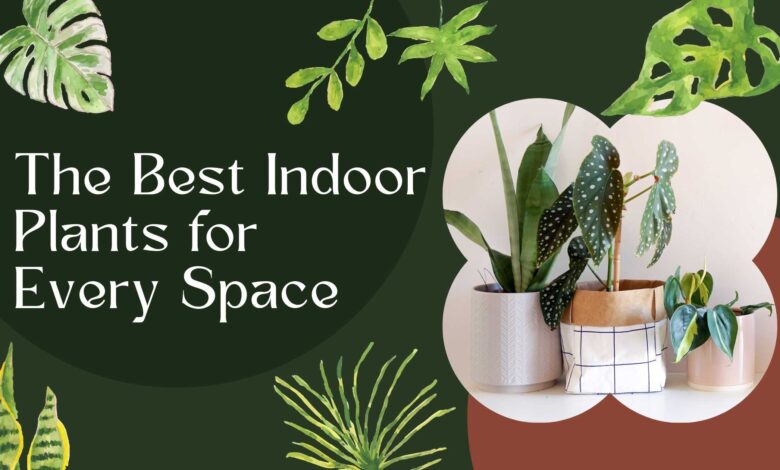Bringing Nature Indoors: The Best Indoor Plants for Every Space

Adding indoor plants to your living space not only adds aesthetic appeal, but can also provide a number of health benefits, such as better ventilation, reducing stress, and increase mood and productivity. There are many types of indoor plants, and choosing the right ones for your home or office can be difficult. This article will look at some of the best indoor plants for different rooms, detailing their care needs and benefits.
Snake plant (Sansevieria)
The snake plant, also known as mother-in-law’s tongue, is a good choice for beginners because it is low maintenance. This plant grows in low light conditions and likes to be watered often, it is good for offices and rooms with little natural light. The snake plant is known for its air purifying properties, which can remove toxins such as formaldehyde and benzene from the air.
Pothos (Epipremnum aureum)
Pothos, also known as the devil’s lily, is another plant that can grow in a variety of light conditions, from low light to neutral light. The climbing style is perfect for hanging baskets or placing on shelves and tables. Pothos is known for its air purifying properties and is relatively easy to grow, making it a good choice for indoor gardens.
Chlorophytum comosum
Spider plants are praised for their ability to clean the air and ease of care. It thrives in bright, indirect light but tolerates low light conditions. Spider plants produce long, curved leaves and small plants, or “spiders,” that hang from the main plant and add visual interest to any room. Perfect for hanging baskets or as a table plant.
Spathiphyllum (Spathiphyllum)
Peace lilies are prized not only for their dense, dark green leaves, but also for their beautiful white flowers, which last for weeks. It prefers low to moderate light and grows in high humidity environments, making it ideal for bathrooms or kitchens. Spathiphyllum can remove toxins such as formaldehyde, benzene, and trichlorethylene from the air.
Ficus Elastica
Rubber trees are prized for their large, glossy leaves, which add a touch of autumn elegance to any room. It prefers light, indirect light and frequent watering, allowing the soil to dry out between waterings. Rubber plants are great for vertical additions to a room and can grow tall if there is enough space.
ZZ plant (Zamioculcas zamiifolia)
ZZ plants are hardy, hardy plants that thrive in low light areas with little irrigation. Its dark green, glossy leaves are also a contemporary addition to indoor spaces, making them popular for offices and homes. ZZ plants are known for their air-purifying properties and ability to withstand neglect, making them ideal for busy people or those who are not very environmentally friendly.
Boston Fern (Nephrolepis exaltata)
Boston ferns are prized for their smooth, feathery leaves, which add a soft and lush texture to indoor spaces. It prefers light, indirect light and high humidity, so it is a good choice for bathrooms or kitchens. Boston ferns require constant moisture, and frequent misting to prevent the tips of the leaves from drying out.
Aloe Barbadensis Grinder
Aloe vera is not only a beautiful moisturizer, but also a healing agent, the gel can be used to treat minor burns and skin irritations. This plant thrives in bright, neutral light and doesn’t need regular watering, making it a great plant for a sunny window. Aloe vera plants are low maintenance and can add a touch of greenery to your kitchen, living room or bedroom.
Conclusion
Adding indoor plants to your living space will not only improve its appearance, but also help create a healthier environment. Whether you’re looking for a low-maintenance option for a busy office or a statement plant for your home to add visual appeal, there are plenty of options to choose from. By choosing the right plants for your space and proper care, you can take advantage of the many benefits of indoor gardening and create a green space with a better look. in a room.




